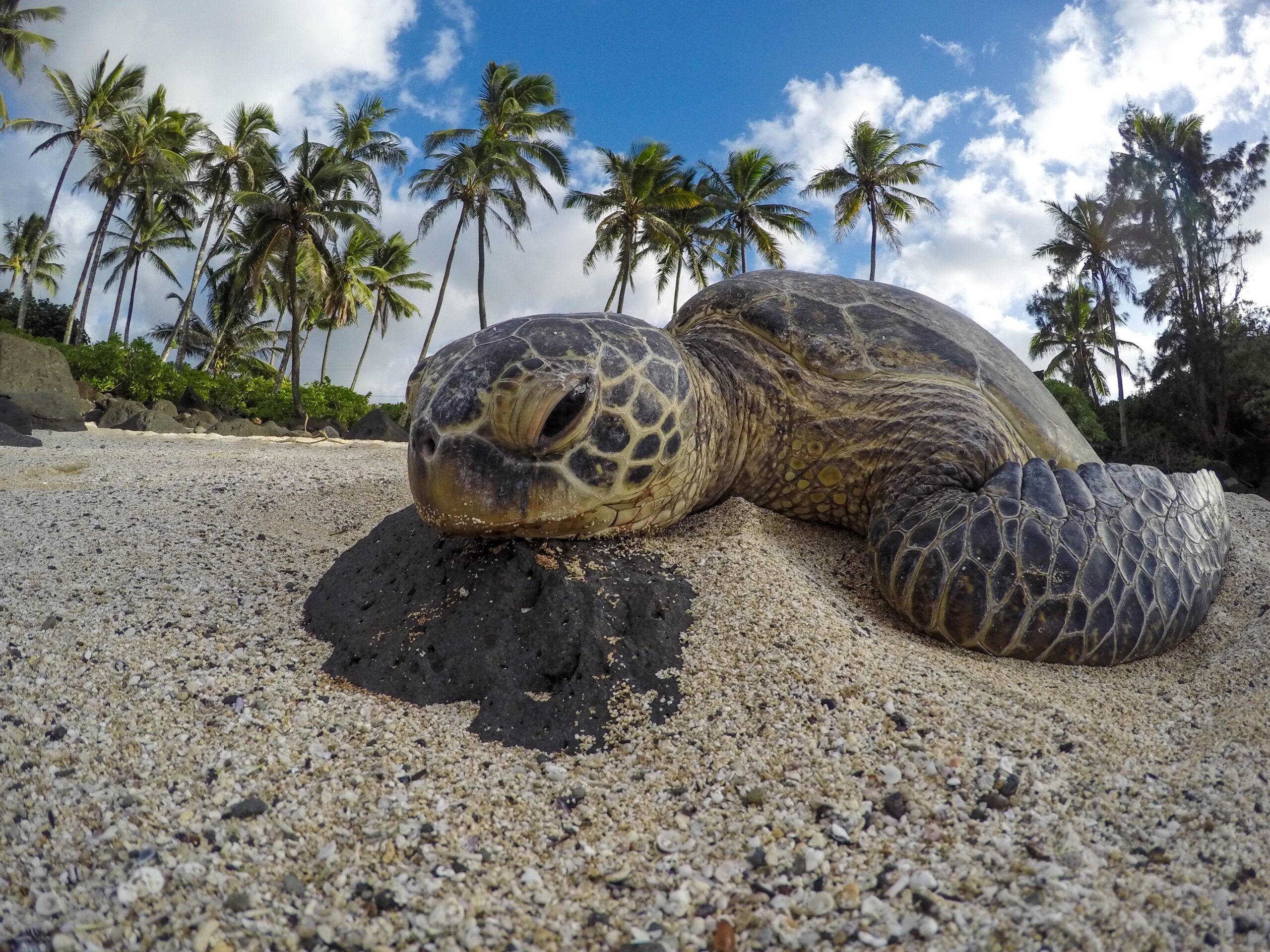For Immediate Release, August 20, 2020
| Contact: |
Jaclyn Lopez, Center for Biological Diversity, (727) 490-9190, jlopez@biologicaldiversity.org |
Federal Government Agrees to Protect Green Sea Turtle Habitat
Florida Nesting Beaches, West Coast Sites Need Safeguards
ST. PETERSBURG, Fla.— The U.S. Fish and Wildlife Service and National Marine Fisheries Service must designate protected critical habitat for green sea turtles under a new legal agreement with conservation groups. Sea-level rise, plastic pollution and global warming threaten green sea turtle habitat.
Today’s agreement, filed in U.S. District Court for the District of Columbia, requires proposed protections by June 30, 2023. The agencies will likely consider proposing protections for green sea turtle nesting beaches in Florida, Georgia, North Carolina and South Carolina, as well as offshore oceanic habitat in the Southeast and on the West Coast.
The agreement stems from a January lawsuit filed by the Center for Biological Diversity, Sea Turtle Oversight Protection and Turtle Island Restoration Network. In 2016 the two federal agencies found that growing climate change and sea-level-rise threats mean the turtles still need Endangered Species Act protection. Despite those threats — particularly to low-lying nesting beaches — the agencies failed to protect the turtle’s critical habitat under the Act.
“We’re thrilled that these imperiled creatures will finally get the habitat protections required by the Endangered Species Act. Green sea turtle recovery has come a long way, but the fight’s not over yet,” said Jaclyn Lopez, Florida director at the Center for Biological Diversity. “Global warming, plastic pollution and sea-level rise are growing threats that can be addressed by protecting critical habitat. Now the feds have agreed to step up and do their part.”
A 2019 peer-reviewed study by Center scientists found most marine species listed under the Endangered Species Act are recovering. Listed species with critical habitat protections, and those listed for more than 20 years, are most likely to be rebounding. The Endangered Species Act prohibits federal agencies from authorizing activities that will destroy or harm a listed species’ critical habitat.
“Today’s decision gives green sea turtles a fighting chance at surviving for the next millions of years,” said Annalisa Tuel, policy and advocacy manager for Turtle Island Restoration Network. “We must use the power of our environmental laws and hold the government accountable to protect the habitat of this ancient species from sea-level rise, plastic pollution and climate change.”
Federal experts have found that green sea turtles should be considered 11 distinct populations, or “distinct population segments.” Although some sea turtle populations, like those in Florida, are improving significantly due to the Endangered Species Act’s protections, several populations continue to struggle. The Mediterranean, Central South Pacific and Central West Pacific populations remain in danger of extinction and remain listed as “endangered.”
“I am hopeful that the legal action for critical habitat designation will bring forth a greater level of protection for green sea turtles, their continued survival and population recovery,” said Richard Whitecloud, founding director of STOP. “Only time will tell.”
Turtle Island Restoration Network is a global ocean conservation nonprofit whose mission is to inspire and mobilize people around the world to protect marine biodiversity and the oceans that sustain all life on Earth.
###




